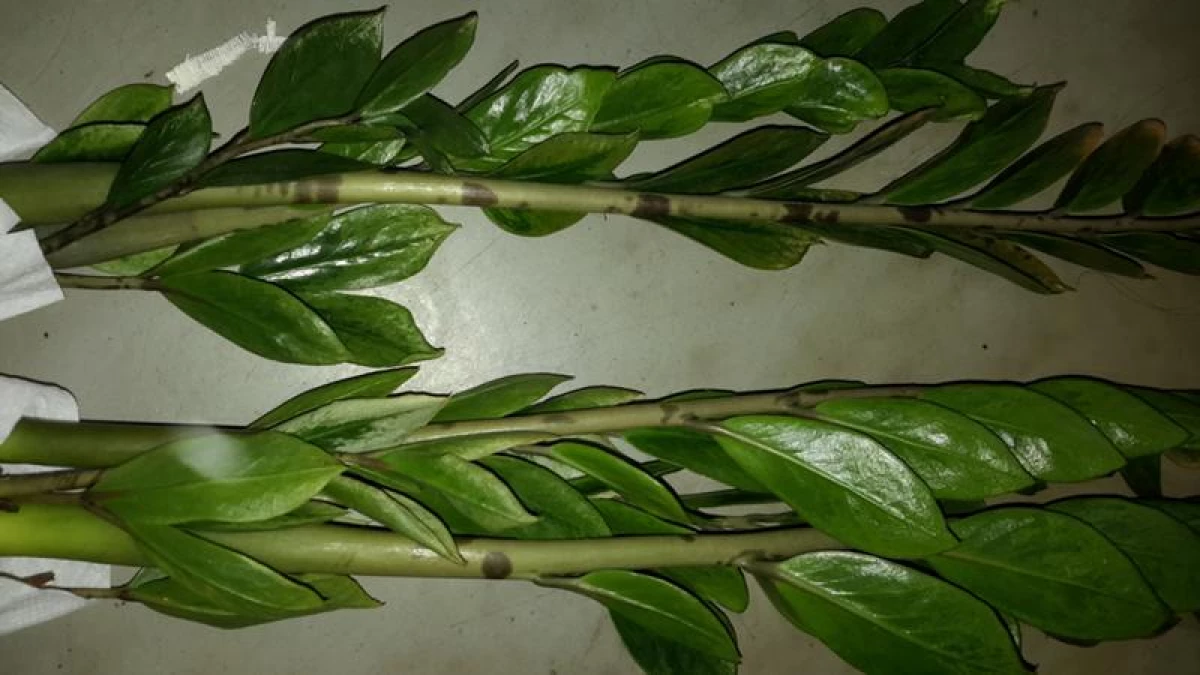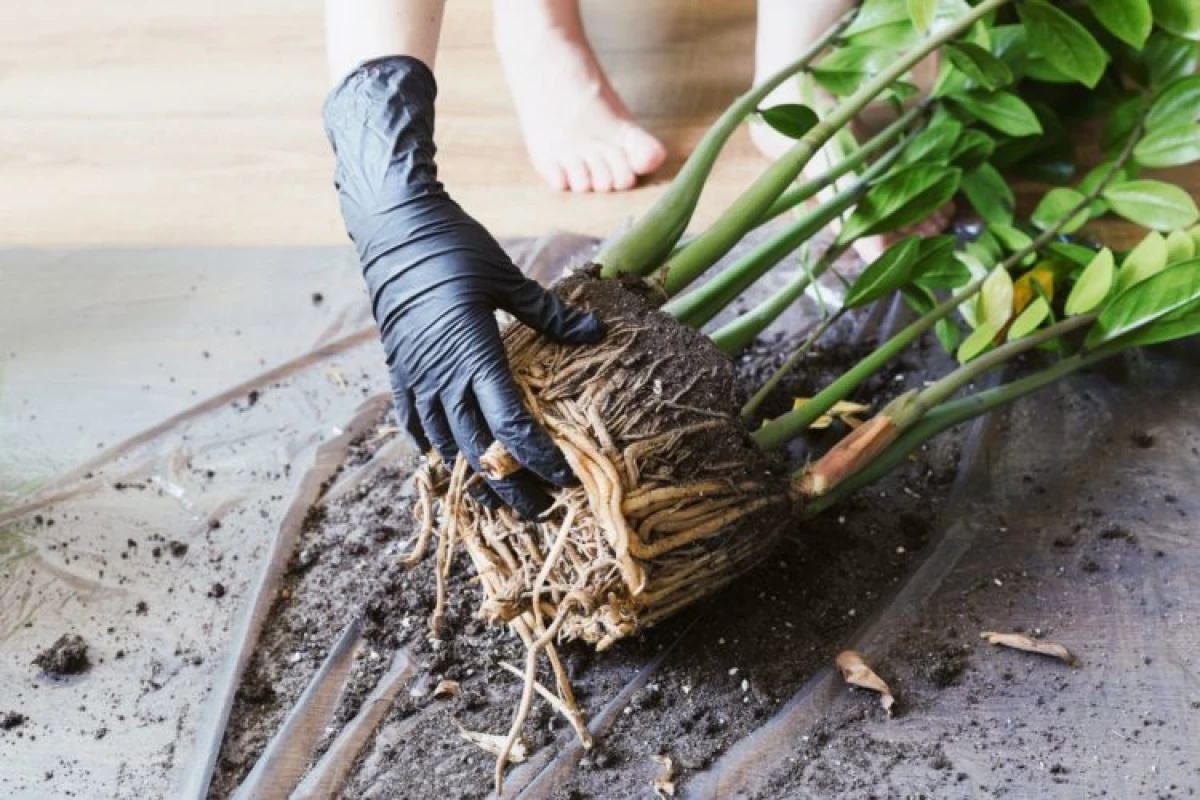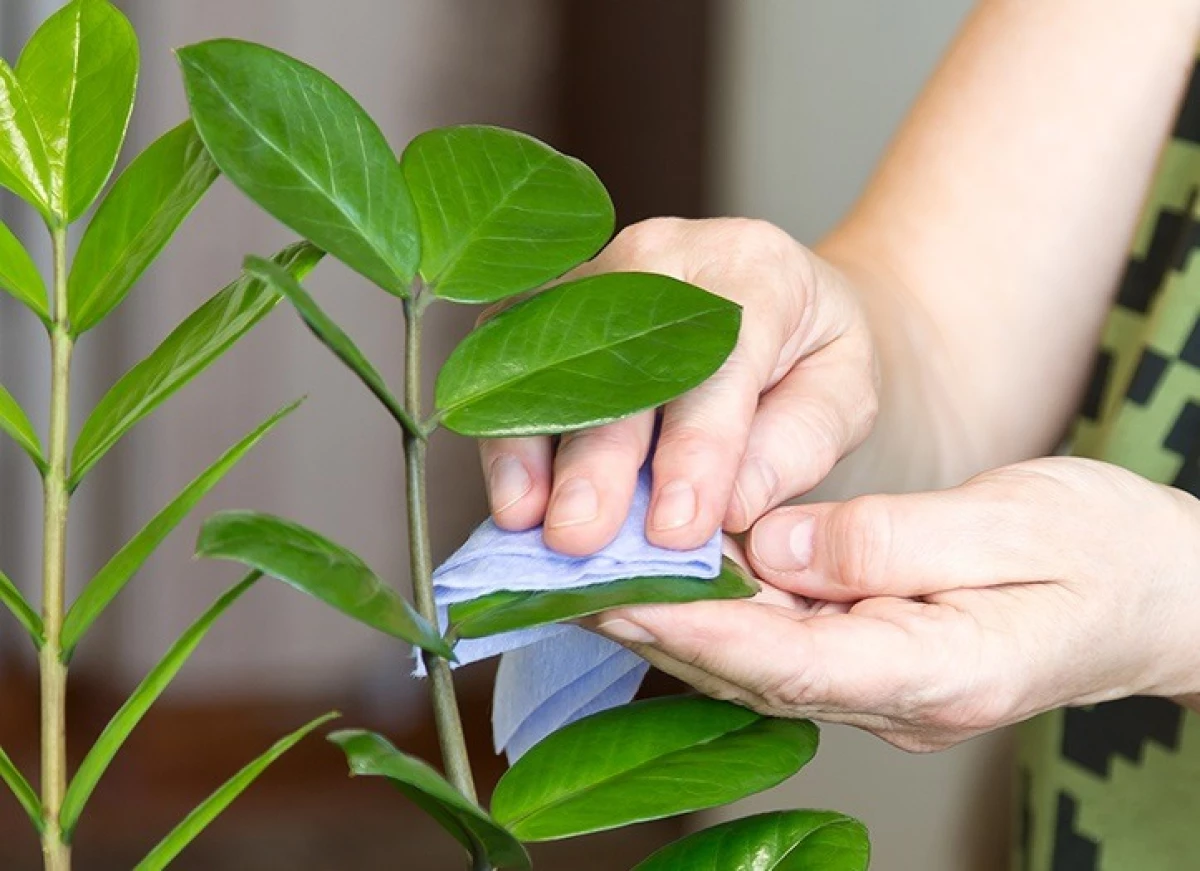
Zamiculkas is valued for a bright greens, so the flower water is saddened any change in the color of the plant. There is a natural desire to figure out, which is why the type of flower has deteriorated, and take steps to do not happen.
Causes of black or brown spotty succulent
A place in which brown specks arose will help put a "diagnosis" by the plant and find an adequate solution to the problem.
Dark specks on the trunk (stem, branches)
The staining stems may occur for the following reasons:
- Changing generations: if the trunk darkened, and the leaves are wishes, see if there are new shoots nearby. If there is, it means that the process of dying the old leaves occurs, and they need to be removed when they are completely dried.
- Renigation: The most likely reason is excessive watering in combination with too low temperatures.
- Pests: more often located on the leaves, but can be found on the trunk.

Possible causes of spots on the leaves of Zamiculkas:
- Shield: Brown volumetric "stains" for calibration turn out to be insects.
- TLL: Another parasite, can infect flower, if you often make it outside.
- TRIPS: These bugs affect plants with very dry air.
- Mechanical damage: The plant can be frostbed, water from entering the leaves can provoke the appearance of spots.
- Solar burn: Straight sunlight Zamiculkas tolerates badly.
- Return: Dark spots on yellowing leaves say about it.
Other types: Why appear?
In addition to dark spots of the flower, can upset:- White spots - appear when the plant is infected with mild cherver.
- Yellow spots - from lack of nutrition, incorrectly selected soil or insufficient illumination.
- Serious-brown spots - phomose (dry rot), occurs with insufficient watering and neighborhood with an infected plant.
All newly acquired room flowers useful for some time in quarantine to avoid massive damage to your home garden with parasites and diseases.
What to do: Fighting pests and disease treatment

When drinking a plant:
- Remove the plant from the pot.
- Inspect the roots, rotten parts carefully cut and sprinkle the cuts of the activated carbon.
- Have a plant.
- Srate to the new soil.
When pests are found:
- Treat zamioculkas drugs from parasites ("Aktellik", "Aktara").
- You can fight insects by folk remedies (economic soap, potash soap, tobacco infusion).
- Watch out for the state of the plant, because It is not always possible to kill insects from the first time, if necessary, processing repeat.
During the disease:
- Treat flower with appropriate disease by the drug.
- If necessary, transfer.
Prevention of recycling problem

Preventive measures should be taken on the basis of what happened to Zamiculkas:
- If there was an excessive irrigation to the alend, adjust the leaving of the plant.
- If Zamokulkas suffered from a lack of light, transfer it to a lighter place or highlight the lamp.
- After circumcision of the rotten parts of the root, the plant is useful to treat the plant by biostimulants ("zircon", "epin") and fungicides ("Fundazole", "Oxychrom").
- If the rotting is caused by the disease or pests, it is necessary to make sure that the flower is fully processed and the infection is destroyed, as well as that it is not on other animals of your green pets.
- To prevent the appearance of parasites, you can treat the flower with phytoverm preparations, "Neon", "Akarin".
In winter, the dollar tree is at rest, and replant it at this time without a reason undesirable. If you allowed overflow, try to start drying the zamoculkas, and put the transshipment until spring. If the flower condition still requires a transplant, it is carried out regardless of the season.
Most often, the stains on Zamokulkas arise with improper care. If the plants surrounding it are healthy and you did not find parasites in your greenhouse, try to normalize the mode for the dollar tree, and most likely it will go to the amendment. Do not forget about the need for periodic feeding.
